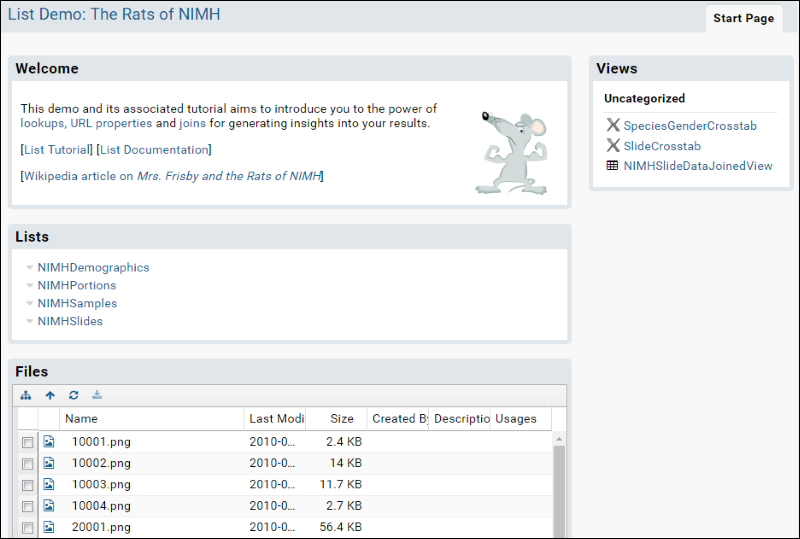This tutorial introduces you to the simplicity of lists and the power of
lookups, URL properties and
joins for generating insights into your results.
This "Rats of NIMH" demo sets up four lists containing information about animal subjects and blood samples from those animals. Samples were subdivided into portions, then into slides, on which experiments were run. Gaining insight into these results requires joining them with information about samples and demographics to get the full picture.
Lookups and URL properties help you to navigate your data more easily. A lookup can let you display the name of the subject instead of displaying an obscure SubjectID. Lookups can also hyperlink information (such as demographic data) with sample data. URL properties can help you link directly to relevant visualizations or outside sources from subject data. Joins help you gain insight across different lists of data by letting you view data from related lists together in common views.
Completing this tutorial requires administrative permissions, which you will have if you install a local evaluation server on your own machine in the first step. The covered features, however, are not restricted to admin users. You can explore many of them using the links provided to our interactive example.
Steps
To see the results of completing this tutorial, view the
interactive example.

Related Topics

